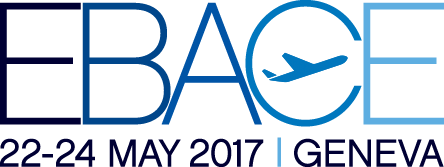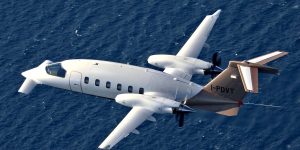Piaggio Steps Up Its Comeback

Show News

Piaggio Steps Up Its Comeback
The plan to relaunch Italy’s Piaggio Aerospace as a civil and defense aircraft manufacturer is gaining momentum some 20 months after moving production from an aging plant in Genoa to a $150million, clean-sheet design factory in Villanova d’Albenga, about 56mi. southwest. This past September the firm delivered the first Avanti EVO twin turbo manufactured there, and since then has delivered two more.
“Every day we take more steps. We’re still not where I plan to be, but I see significant improvement from a year ago,” says CEO Renato Vaghi, who took that position in late August. And there’s more improvement to come as the factory ramps up toward a target rate of 30 aircraft a year, which represents just half of its actual capacity.
That’s a ways off, he admits. Production plans call for another three P.180 EVOs this year, and four moreP.1 HH Hammerhead unnamed aerial system in addition to the two currently in production. The Hammerhead is based on the P.180 Avanti.
“This has been an incredible effort,” says Vaghi, as Piaggio recovers from collapse in late 2012 of its largest customer with fleet of 56 aircraft, the disruption of moving into a new factory and rebuilding a corporate culture, the delayed certification of the P.180 EVO, and the crash last year of prototype Hammerhead. The company was supported through its darkest days by Abu Dhabi state investment firm Mubadala, which no owns 100% of Piaggio.
“We have very ambitious plans,” says Vaghi. “Our growth potential extends to 60 aircraft a year.” But to get even half way there, Piaggio must stimulate sales for the latest, third generation EVO version of the P.180, which still looks futuristic despite the design having flown 30 years ago.
A four-point campaign calls to: Create awareness worldwide of the EVO and it’s capabilities; understand markets with the highest growth potential and seek repeat business from existing customers; develop customer support; and commercial approach through creating mission-derived value packages to entice potential customers. Product development will underpin this strategy, with enhancement such an upgraded landing gear and a larger fuselage door for medevac missions.
Vaghi notes that Piaggio has a backlog that will allow 1 – ½ years of production at current rates, “and there are still some slots available in 2018.” These could be taken, though, if final negotiations with “at least five or six” customers prove successful.
There are currently around 220 P.180 Avanti aircraft in operation globally. Piaggio Aerospace is at Booth P98 and StaticSD19. – John Morris

